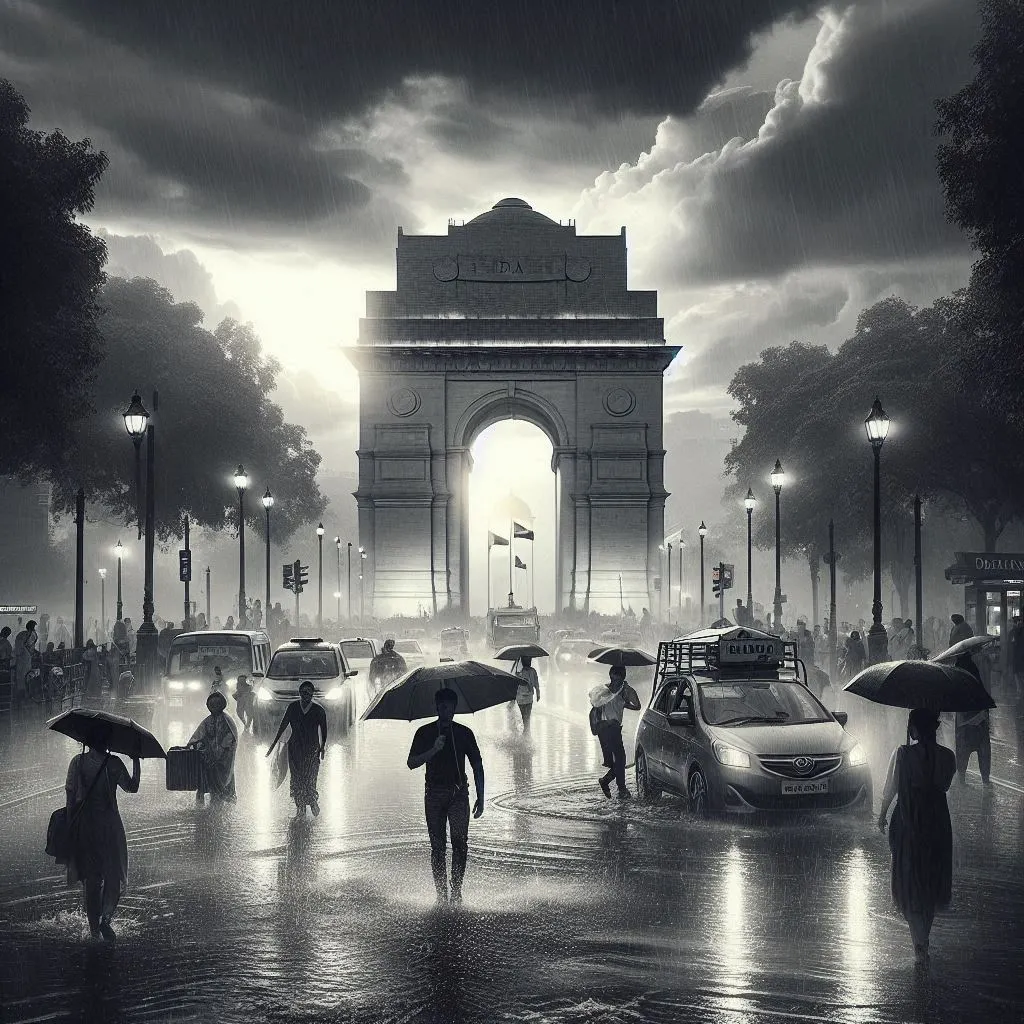
The residents of Delhi-NCR woke up to a wet morning today as heavy rains lashed the region. The Indian Meteorological Department (IMD) has issued a yellow alert, predicting more showers over the next two days.
Morning Deluge
Early morning rain brought much-needed respite from the summer heat, with several parts of Delhi and its neighboring areas, including Noida, experiencing significant rainfall. The downpour led to waterlogging in low-lying areas, affecting traffic movement and daily routines.
IMD’s Forecast
The IMD’s yellow alert indicates that the region should prepare for more rainfall and potential disruptions. According to the forecast, Delhi-NCR will continue to experience heavy showers, which may lead to waterlogging and traffic snarls. The rain is a result of the monsoon currents, which have intensified over North India.
Impact on Daily Life
The heavy rain has had both positive and negative impacts on the daily lives of Delhi’s residents. While the cooler temperatures are a welcome relief, waterlogged streets and traffic jams have created challenges. Commuters faced delays, and public transport was impacted, with several routes being diverted.
Government Measures
In response to the IMD’s alert, the local authorities are on high alert. The municipal corporations have deployed teams to manage waterlogging and clear drains. Emergency services are also prepared to deal with any contingencies arising from the heavy rainfall.
Public Advisory
Residents are advised to stay indoors as much as possible and avoid unnecessary travel. If you must go out, be cautious of waterlogged areas and follow the updates from the IMD and local authorities. It’s also essential to ensure that your homes and surroundings are safe and that drainage systems are not blocked.
Conclusion : Heavy Rains
As Delhi-NCR braces for more rain, the IMD’s yellow alert serves as a reminder to be prepared and stay safe. While the monsoon showers bring relief from the heat, they also bring challenges that need to be managed with caution and cooperation from all residents. Stay updated with weather forecasts and take necessary precautions to navigate through these rainy days safely.
FAQ: Heavy Rains in Delhi-NCR
Q1: What is the current weather situation in Delhi-NCR?
A1: Delhi-NCR is experiencing heavy rains, resulting in waterlogged streets and traffic disruptions. The IMD has issued a yellow alert predicting more showers over the next two days.
Q2: What does a yellow alert from the IMD mean?
A2: A yellow alert indicates heavy rainfall and potential disruptions. Residents should prepare for adverse weather conditions and stay updated with forecasts.
Q3: How long will the heavy rain continue?
A3: The IMD predicts that Delhi-NCR will experience heavy rain for the next two days.
Q4: What areas are most affected by the rain?
A4: Various parts of Delhi and its neighboring regions, including Noida, have experienced significant rainfall, leading to waterlogging in low-lying areas.
Q5: How has the heavy rain affected daily life?
A5: The rain has caused waterlogging, traffic jams, and delays in public transport, affecting the daily routines of residents.
Q6: What precautions should residents take during the heavy rains?
A6: Residents are advised to stay indoors, avoid unnecessary travel, be cautious of waterlogged areas, and follow updates from the IMD and local authorities.
Q7: What measures are local authorities taking in response to the heavy rain?
A7: Local authorities have deployed teams to manage waterlogging, clear drains, and ensure emergency services are prepared for any contingencies.
Q8: Where can I find updates on the weather forecast?
A8: Stay updated with the latest weather forecasts from the IMD, local news sources, and official social media channels of relevant authorities.
Q9: How can I ensure my home is safe during the heavy rains?
A9: Ensure that drainage systems are not blocked, secure loose items around your home, and keep emergency supplies handy.
Q10: What should I do if I encounter a waterlogged area?
A10: Avoid driving through deep water, use alternative routes if possible, and stay cautious of potential hazards like open manholes and electrical wires.





